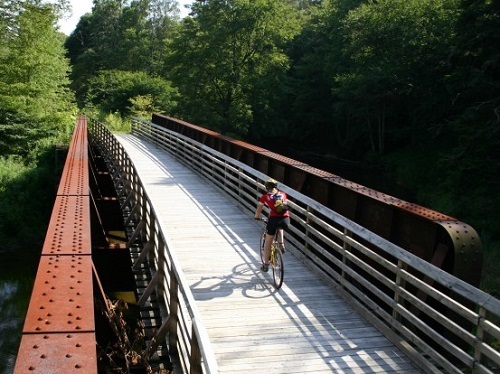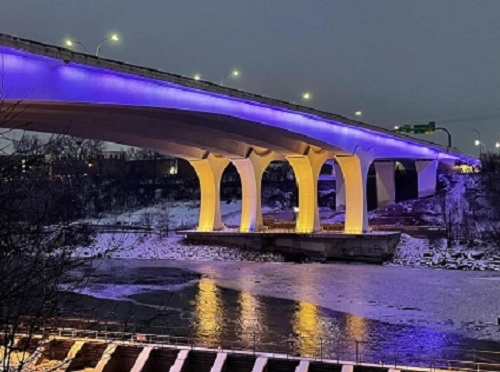FEDERAL ACTION
USDOT Official Gives Cities Tips for Winning Federal Transportation Grants – Route Fifty
Proposed Update to Renewable Fuel Standard Could Benefit EV Makers – Transport Topics
EV Hype Overshadows Public Transit as a Climate Fix – CityLab
State AGs Give EPA Until End of January to Respond to Year-Round E15 Petitions – Progressive Farmer
Biden-Harris Administration Finalizes Protections for Tongass National Forest – USDA (media release)
FHWA Providing $29.4 Million in ‘Quick Release’ Emergency Relief Funding to California, Four U.S. Federal Land Management Agencies for Flood Damage Repair – FHWA (Media release)
INFRASTRUCTURE RESILIENCE AND SUSTAINABILITY
The hidden environmental costs of the transitioning to electric vehicles – NPR
How North Carolina is planning to recoup the gas tax from electric vehicles – WCNC-TV
A giant solar microgrid is coming to New York City’s JFK airport – Canary Media
Port of Long Beach doubles down on environmentalism, announces wind turbine facility – Long Beach Business Journal
Amsterdam’s Underwater Bike Garage Is Next-Level Cycling Infrastructure – CityLab
AIR QUALITY
Aviation Industry in Crosshairs for Next Biofuel Push – Roll Call
Traffic pollution can impair brain function – The Hill
ENVIRONMENTAL JUSTICE
Can Nonprofit Electric Car-Shares Boost EV Affordability? – Governing
The Economic Impact Of EVs On Households – Not All Are Equal – CleanTechnica
Some cities turn to free public busing to counteract inequity – PBS NewsHour
NATURAL RESOURCES
With Howitzers and Helicopters, States Trigger Road-Clearing Avalanches – Stateline
Salton Sea lithium deposits could help EV transition, support economically devastated area – PBS NewsHour (video)
Environmentalist wants to see state funding used to restore water quality in Tampa Bay Area waterways – WTVT-TV
Wisconsin Governor Takes Total Control of Resources Agency – U.S. News and World Report
As Nutrient Reduction Strategy turns 10, why aren’t Iowa’s waters safer and cleaner? – Des Moines Register (Opinion)
HEALTH AND HUMAN ENVIRONMENT/ACTIVE TRANSPORTATION
How to build a better bike-share program – Grist
Fort Smith directors pedal forward on new plan for bicyclists, pedestrians – Northwest Arkansas Democrat-Gazette
E-bike ban on hold in Key Biscayne. Will state and county act? – Key Biscayne Independent
Explosive Growth Expected Across the Micromobility Sector – Government Technology
Houston Transit Agency Proposes Bike Share Takeover – Planetizen
FEDERAL REGISTER NOTICES
FY 2023 Competitive Funding Opportunity: Low or No Emission Grant Program and the Grants for Buses and Bus Facilities Competitive Program – FTA (Notice of funding opportunity)
Notice of Availability: Proposed Updates to Joint Development Circular – FTA (Notice)
Special Areas; Roadless Area Conservation; National Forest System Lands in Alaska – Forest Service (Final rule and record of decision)
Control of Air Pollution From New Motor Vehicles: Heavy-Duty Engine and Vehicle Standards – EPA (Final rule)
Reconsideration of the National Ambient Air Quality Standards for Particulate Matter – EPA (Proposed rule)
Proposed Consent Decree, Clean Air Act Citizen Suit – EPA (Notice; request for public comment.)
Withdrawal of the Notice of Intent To Prepare an Environmental Impact Statement for the Mississippi River Hatchie/Loosahatchie, MS River Mile 775–736, Tennessee and Arkansas, Ecosystem Restoration Feasibility Study – Army Corps of Engineers (Notice)
Public Meeting of the Chesapeake and Ohio Canal National Historical Park; Commission Notice – National Park Service (Meeting notice)
BNSF Railway Bridge Across the Missouri River Between Bismarck and Mandan, North Dakota; Record of Decision – Coast Guard (Notice)
Renewable Energy Modernization Rule – Bureau of Ocean Energy Management (Notice of proposed rulemaking)




